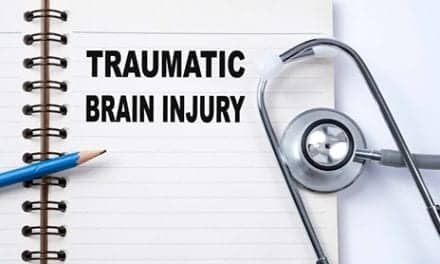
Stephen G. Linton, PT, DPT, guides PTW client, Bill, in using Titan Battle Ropes to elevate his dynamic core and hip stability, gait pattern, posture, ambulation endurance, and functional lifting abilities. At the time of this session, Bill is approaching discharge from therapy after weeks of progressive interventions improving his prone resting and standing posture limited by his hip flexure contracture and hip joint anterior adhesions.
By Stephen G. Linton, PT, DPT
Fitness and an overall sense of well-being are life goals that many people try to achieve, but may feel are daunting and unattainable, so no effort is enough to reach them. I have heard many patients, and fitness members alike, say that they are too old to start now, or question why start now when they have been living their lives this way for so long. “How can this help now?” they ask. These questions and views are especially expressed by members of the geriatric population.
Our responsibility as physical therapists is to educate this patient population and all others about the benefits of overall fitness on a person’s life. As part of this responsibility, we aim to provide guidance on the types of exercises, intensity, duration, and frequency that will maximize each person’s balance, ambulation/activity endurance, daily living tasks tolerance, independence, confidence, and optimistic views on life. At the Physical Therapy and Wellness Institute (PTW), a medically based fitness program is used to help patients attain a higher quality of life. A questionnaire is utilized along with a medically based screen and consultation with a doctor of physical therapy to set up a program that will encompass strengthening, endurance, balance, and neuromuscular re-education, in order to impact the patient’s ability to perform activities of daily living and any recreational endeavors.
Tick, Tock, the Body Changes
As humans age, their bodies undergo many changes. Muscles start to atrophy and become more rigid. Connective tissue becomes less mobile and stiffen, causing restriction on the blood vessels and compression on the nerves. Blood volume decreases each year as individuals age, causing an increased need for oxygen absorption. Blood vessel walls become more rigid, resulting in the need for more blood to help with flow throughout the body. Bones become less dense, leading to an increased risk of fractures with falls. Decreased muscle strength lends itself to balance deficits, causing a falls risk increase. Lastly, memory deficits occur as people age, which can be reduced with an increased blood flow to the brain from physical activity.
The effects of physical activity on the geriatric population with regard to the reduction of these various bodily changes is profound. Patients and clients who are among the older adult population need proper education about the benefits of physical activity on these changes before those changes become too pronounced.

Doris, a PTW client, utilizes TRX straps to improve balance, quad strength, and sit to stand transfers without use of her bilateral armrests. Recently discharged, Doris is now an avid fitness member motivating people of all ages in the clinic.
Transition to Fitness
Once a patient’s goals have been met and they are discharged from physical therapy, the patient may express an interest in or the therapist will identify a need for further intervention under the clinic’s supervision. Separate from the physical therapy facility, but housed in the same buildings, our centers are loaded with state-of-the-art strengthening equipment. Each and every exercise is performed under the guidance of our doctors, exercise physiologists, and/or exercise specialists.
With no annual fees and no limit on monthly visits, this program strives to provide a cost-conscious alternative to help clients continue to achieve full body repair, or simply take good care of their bodies. Once a client is set up in this program past the consultation, the information is sent to their primary medical physicians to make them aware of the patient’s decision to further their improvement in function. Staff members have embraced the concept that a team approach in meeting the client’s expressed goals is critical in achieving optimal results.
In the practice’s fitness program, a variety of specialty strengthening and cardio equipment is used to exceed client needs. The main differentiator is the AlterG Anti-Gravity Treadmill from Fremont, Calif-based AlterG. Built with NASA technology, the AlterG is designed to use differential air pressure and reduce the impact/stress on the body. This enables therapists to reduce the user’s weight-bearing in 1% increments down to 20% of body weight, allowing
for quicker walking or running. The air pressure also enables individuals affected by a gait or balance deficit to walk with no risk of falling, or to perform dynamic gait activities in a safer rehabilitation environment.
The main cardio and strengthening equipment that is utilized at PTW include Precor and Cybex treadmills, ellipticals, recumbent bicycles, cable machines, multi-hip, row machine, lat pulldown, and the Adaptive Motion Trainer. The therapists utilize a Body Solid knee extension/flexion machine and a set of TRX straps for instability exercises. When doing dynamic plyometric exercises, agility ladders, cones, short hurdles, and TRX slam balls are utilized.
It is not only important to have the right equipment, it is also key to find new innovative ways to make a patient’s session unique and progressive with variations of progressions. Therapists try to make the experience one that leaves a lasting effect not only on the body, but on the mind as well. It is important to track the differences noted each day and week as the patient progresses through their program.

Fitness member Marcia uses a Cybex lat pulldown machine to improve her back strength as a way to prevent postural changes and improve her dynamic shoulder stability.
Move More, Live Better
A sedentary lifestyle has been said to be just as stressful to the body as cigarette smoking. Regular physical activity helps to stimulate the immune system and delay the onset of disorders such as diabetes and stroke. It helps to improve falls risk, by challenging the body to allow self stabilization throughout normal daily tasks. It helps not only the physical aspect, but the cognitive aspect as well. It also helps to release endorphins, allowing for improvement in those suffering with depression.
In the geriatric population, it is a misconception—and frankly a disappointment—that people think strenuous exercise can do harm to the body as they age. Age is just a number, and clinicians cannot let patients use it as an excuse or limitation. According to the World Health Organization, geriatric patients need 7 to 8 hours of sleep per night along with 150 to 300 minutes of moderate-intensity aerobic exercise, and 75 to 150 minutes of high-intensity aerobic exercise, each week. Anaerobic exercise needs to be performed at least two times per week and is a vital part of the overall fitness program. When performing aerobic exercise, make sure to take rest breaks when the body truly needs them, and not when the time is up. Pushing a patient to test his or her limits allows for new limits during the next visit, versus doing the status quo and showing no progression.
One effect of aging is a decrease in bone density or osteoporosis. According to research, including Wolfe’s Law, as the body takes on larger stress, it turns on lamellar bone remodeling drifts in the bone and allows for reshaping, improving density, and for future strain to be placed on the same bone with greater stress taken than previously.1 Growth of this bone is dependent primarily on mechanical tension loads on the body. Frost says that when the bony tissue is undergoing mechanical strain it exceeds a threshold tier, resulting in the production of new collagenous fibers to help improve thickness, tensions, and strength of the bone.2 Research has also shown that walking three or more times per week helps to reduce the occurrence of dementia by 35%.
[sidebar float=”right” width=”250″]Product Resources
The following companies offer products that can be used for fitness programs of all types:
AlterG
www.alterg.com
BTE
www.btetech.com
Clarke Health Care Products
www.clarkehealthcare.com
Dynatronics
www.dynatronics.com
Everyway4all
www.everyway4all.com
Fitter International
www.fitter1.com
GAITRite / CIR Systems Inc
www.gaitrite.com
Magister Corp
www.magistercorp.com
Mobility Research
www.litegait.com
OPTP
www.optp.com
Performance Health
www.performancehealth.com
ProtoKinetics
www.protokinetics.com
Sissel USA
www.sisselshop.com
Spirit Fitness
www.spiritfitness.com
Stretchwell
www.stretchwell.com
The Hygienic Corp
www.theraband.com
VersaSlider
www.versaslider.com[/sidebar]
Case in Point
The following is an account of Marcia H, a member of the fitness program in the practice’s Harleysville, Pa, location.
Marcia had lived an active lifestyle, but was hindered by an abdominal surgery that left her bedridden and lacking confidence of return to her former self. After a bout of physical therapy, she was back on her feet, but still had not yet returned to normal activity. After feeling like progress was being made, Marcia was again derailed by a right knee replacement a few years later. This once again sidelined her from her normal activities of daily living and recreational endeavors.
One year later, after her knee replacement, Marcia decided to join the fitness program and get back the life she once had and desired. That desire was very apparent from the first consult and remains apparent today. Marcia reports that she was not able to climb stairs efficiently, getting out of bed was a chore, her walking endurance was diminished, and her core strength was severely lacking.
Today, Marcia throws around a 25-pound slam ball, climbs stairs, and walks without hesitation. She squat lifts and has overcome a fear of the lat pulldown machine. Marcia reports that she feels she is a new and improved version of herself, and is happy that she has become part of the community this program provides
Good for the Patient, Good for the Practice
Establishing a medically based fitness program can provide a significant value to a practice and to its patients. Making the program fun and meaningful to the patient’s goals helps them to remain compliant with attendance and may eventually lead to positive life changes. Allowing patients to regain their independence and stay on the right track with their current program are keys to a longer and healthier lifestyle. PTP
Stephen G. Linton, PT, DPT, is clinical supervisor for the Physical Therapy & Wellness Institute’s Harleysville, Pa, location. He earned a bachelor’s degree in biology and a doctorate of physical therapy from the University of the Sciences, Philadelphia. Linton also earned his McKenzie Part A certification. He is a member of the APTA and has a strong interest in vestibular/dizziness rehabilitation and McKenzie techniques. For more information, contact [email protected].
References
1. Frost HM1. Wolff’s Law and bone’s structural adaptations to mechanical usage: an overview for clinicians. Angle Orthod. 1994;64(3):175-88.
2. Frost HM1. Skeletal structural adaptations to mechanical usage (SATMU): 4. Mechanical influences on intact fibrous tissues. Anat Rec. 1990 Apr;226(4):433-9.





